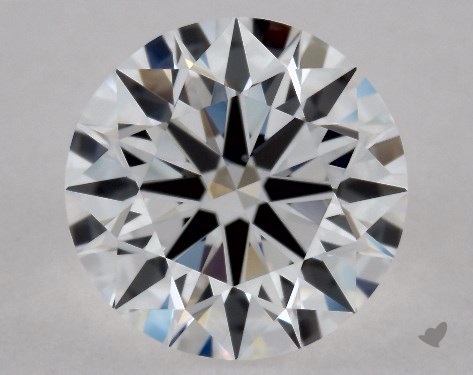
A FL or IF diamond is more about status than appearance. You may hear FL and IF diamonds referred to as ‘collectors diamonds’ or ‘investment diamonds’ – this is a smart way of saying they carry big price tags for a quality level that simply cannot be appreciated by the human eye. Are Flawless and Internally Flawless Diamonds Worth the Money? Prices also increase exponentially as you move up quality grades in others areas (i.e. Generally speaking, a FL diamond will cost around 20%-30% more than an equivalent IF diamond. Would you see where this additional money had been spent? Absolutely not. The price is $14,490, so it is $2,900 cheaper than the flawless diamond. The second diamond is a 1.20ct D-IF round brilliant with these specs: CUT: I would suggest that we could do better on the cut, but for the purpose of comparison, this is a good diamond to use. This 1.18ct D-FL round brilliant by James Allen has the following specs: CUT: These crucial differences will have a great impact on price, so to make a comparison we must attempt to compare like for like. Even when all the other specs are the same, the beauty of a diamond begins and ends with the cut. The diamond on the left is fairly average but clearly lacking the precision of the diamond on the right. Does this translate into excellent light performance in both instances? No.

These additional comments on IF stones are simply what differentiates them from a FL grading. There is a note reading ‘minor details of finish not shown’ – the blemish is so negligible it is not significant enough to be marked on the plot. You will notice on the diamond certificate, there are no marks on the inclusion plot. This 1.348ct D-IF round brilliant diamond is part of Whiteflash’s esteemed A CUT ABOVE® collection – it is a knockout. In fact, even the skills of diamond experts are put to the test when looking at FL and IF diamonds under a loupe. If you are looking for the pinnacle of diamond perfection, the idea of a surface mark may be off-putting, however it is impossible to tell a IF diamond from an FL diamond by eye. Characteristics such as polish marks, extra facets, naturals and surface graining would all result in a diamond being deemed internally flawless as oppose to flawless. While inclusions are found within a diamond, blemishes are external marks on the surface of a diamond. The difference between flawless and internally flawless diamonds comes down to blemishes. What is the Difference Between a Flawless and Internally Flawless Diamond? You can learn more about the GIA clarity grading system here and you can take a closer look at types of inclusions here. Once these details have been assessed, the diamond is given a grade from FL – I3.ĭiamond clarity can have a big impact on the beauty, durability and price of a diamond. The diamond is scrutinized at a 10x magnification and experts consider the type of flaws and their positioning. The GIA created the diamond clarity scale and it has now become the international standard.

I only recommend considering diamonds that are GIA or AGS graded – only these two laboratories offer accurate and consistent grades and are respected by diamond experts the world over. Diamond Clarity GradingĪ diamond clarity grading is given based on the number of inclusions and their impact on a diamond. If you are considering a flawless or internally flawless diamond for your jewelry, or are simply curious about these exceptional gems, this guide will take you through the all the details. These diamonds are the embodiment of purity – a beauty that epitomizes the wonder of nature and the skill of man. The appeal of a quality diamond goes beyond its beauty wrapped up in status, scarcity and rarity, there are no gemstones which represent these ideals more so than flawless (FL) and internally flawless (IF) diamonds.

Sometimes I do receive a commission when you click on links and buy the products. This page contains references to diamonds or engagement rings from different companies.


 0 kommentar(er)
0 kommentar(er)
